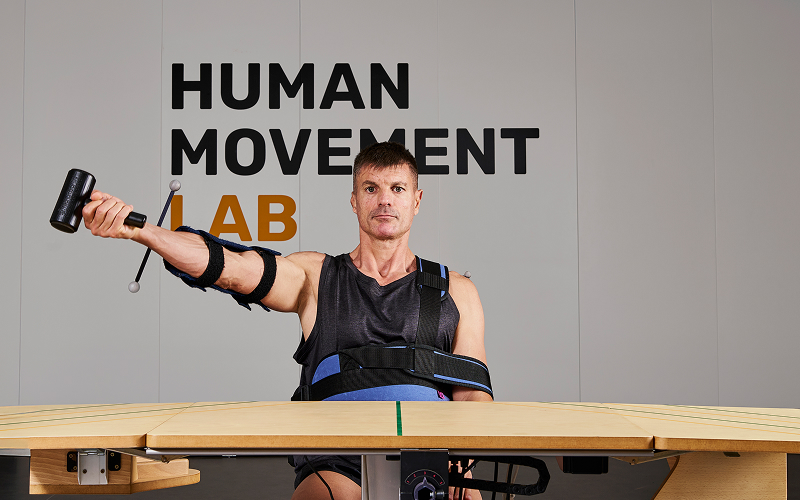Artículo
50 (5): 510 – 516. 59129
This cross-sectional study analyzed the influence of chronic shoulder pain (CSP) on movement variability/kinematics during humeral elevation, with the trunk and elbow motions constrained to avoid compensatory strategies. For this purpose, 37 volunteers with CSP as the injured group (IG) and 58 participants with asymptomatic shoulders as the control group (CG) participated in the study. Maximum humeral elevation (Emax), maximum angular velocity (Velmax), variability of the maximum angle (CVEmax), functional variability (Func_var), and approximate entropy (ApEn) were calculated from the kinematic data. Patients' pain was measured on the visual analogue scale (VAS). Compared with the CG, the IG presented lower Emax and Velmax and higher variability (i.e., CVEmax, Func_var, and ApEn). Moderate correlations were achieved for the VAS score and the kinematic variables Emax, Velmax and variability of curve analysis, Func_varm, and ApEn. No significant correlation was found for CVEmax. In conclusion, CSP results in a decrease of angle and velocity and an increased shoulder movement variability when the neuromuscular system cannot use compensatory strategies to avoid painful positions.

Universitat Politècnica de València
Camino de Vera s/n
46022, Valencia (España)
+34 96 111 11 80
atencion.cliente@ibv.org
El Instituto de Biomecánica (IBV) es un centro tecnológico que estudia el comportamiento del cuerpo humano y su relación con los productos, entornos y servicios que utilizan las personas. Fundado en 1976, el instituto es un centro concertado entre el Instituto Valenciano de Competitividad Empresarial (IVACE) y la Universitat Politècnica de València (UPV).